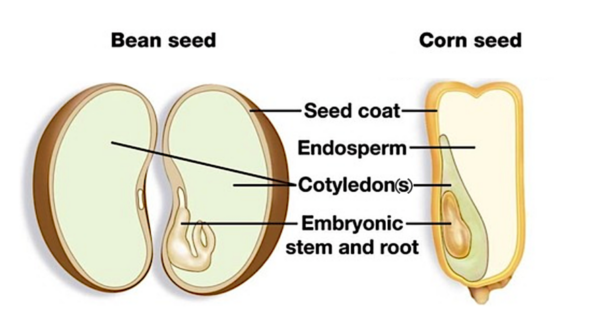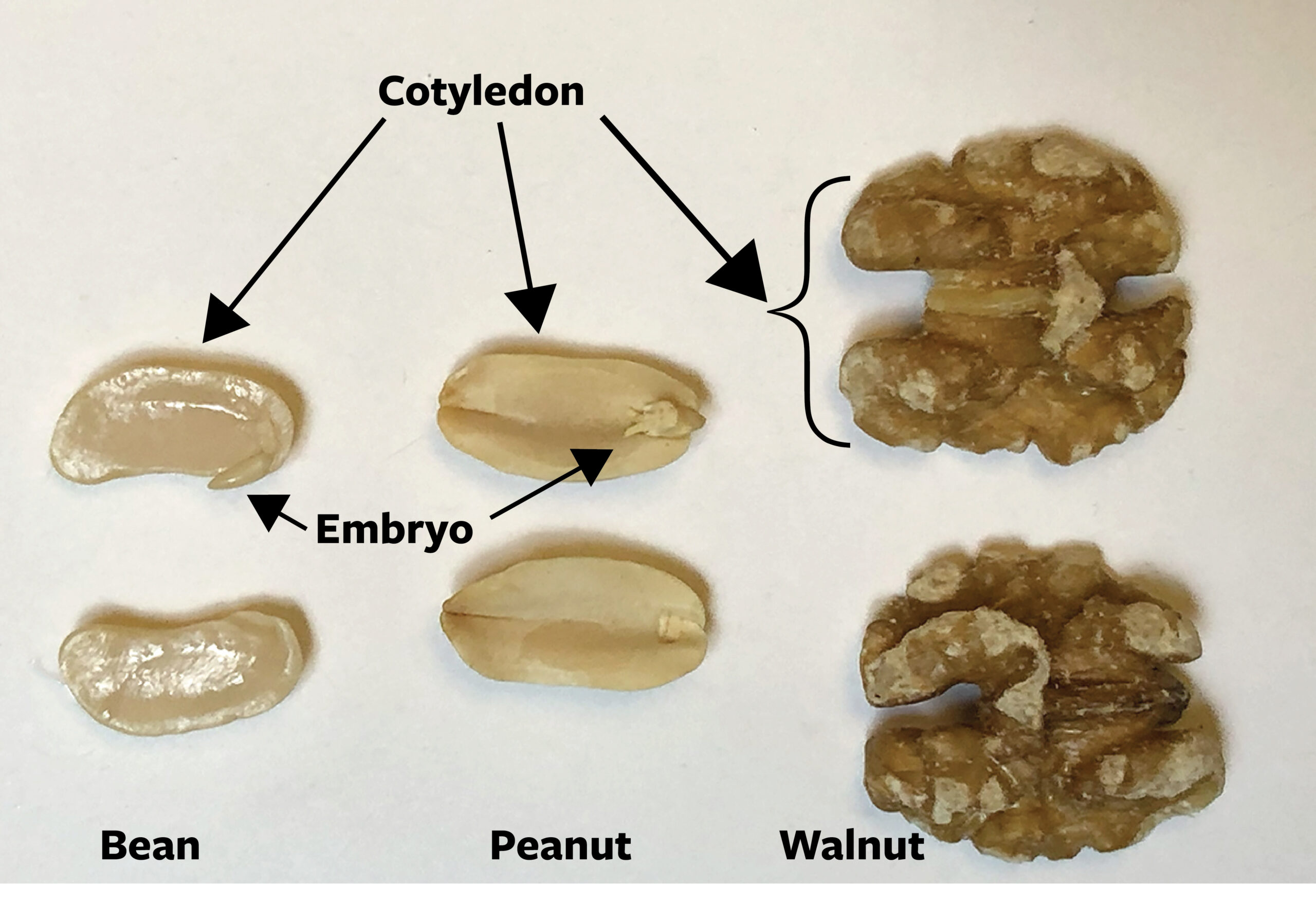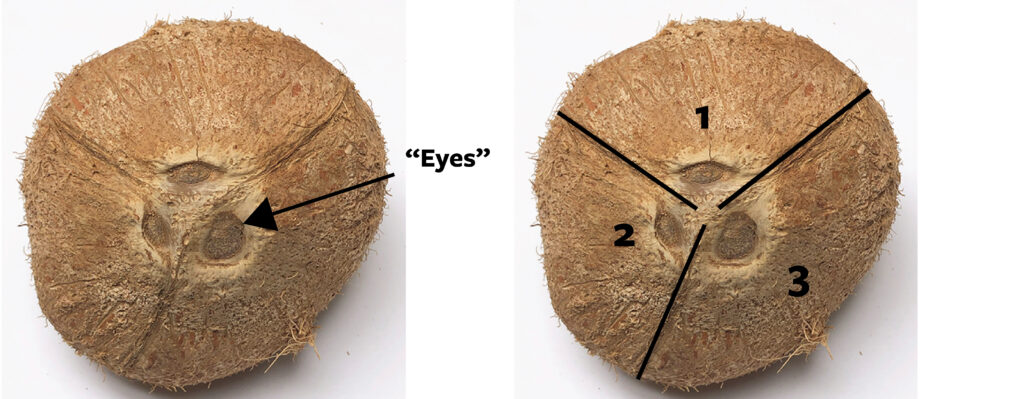Of the many different structures produced by plants, one of the most remarkable is the seed. At its most basic, the seed is a reproductive structure consisting of an embryonic plant enclosed in a protective covering, the seed coat. But this simple definition hardly acknowledges all that the seed is and does. Within the seed coat, we find the embryo and nutritional materials used to sustain the germinated seedling until it is able to make its own food via photosynthesis. In flowering plants, the nutritional materials are composed of oils, fats, starches, and many other compounds including sugars, that are usually distributed in seeds in one of two ways. Either the nutrients surround the embryo in a tissue known as endosperm, as in a corn seed, or the nutrients are stored in leaf-like structures known as a cotyledons which are part of the embryo, as in bean seeds.

If the nutrition is stored as endosperm, the cotyledons are generally small and undeveloped; whereas when the cotyledons are enlarged, there is little endosperm in the mature seed. Most of us are familiar with nutrient-containing cotyledons. When you eat beans, peanuts or walnuts you are largely consuming cotyledons containing the stored nutrients.

On the other hand, the consumption and an understanding of what is nutrient-rich endosperm is less familiar to most of us. But for those of us who eat corn, coconuts, or drink coconut milk, we are consuming endosperm; that is, nutrition meant to sustain the developing seedling. When you bite into fresh corn you often are sprayed with liquid that is sweet and sticky; this is liquid endosperm and is comprised mainly of sugars. But as the corn ear matures, the sweet liquid is converted to solid starch. This is what happens when you buy “old” corn or corn that has not been refrigerated; the endosperm has been converted to starch and the corn kernels are no longer sweet.
Let’s consider endosperm in a little more detail. Next time you are in the produce section of your favorite market have a close look at the coconuts. If the coconut is not over-ripe, you will be able to hear the liquid endosperm sloshing about when you shake the coconut.
You’ll also notice that at one end of the coconut can be found three depressions, commonly called “eyes”.
Under each of these eyes is or was an embryo. Each coconut, therefore, is a result of three separate fertilizations to produce a structure in which the three fertilized embryos are joined and united to form the coconut (the fruit containing the seed). However, in coconuts, at some point in fruit and seed development a decision is made to abort two of the three embryos and to channel the endosperm nutrients to a single embryo. But under which eye is the retained embryo? If you look carefully at the coconut you’ll notice ridges (sutures, highlighted below) which are evidence of the previous uniting of the original, three developing embryos.

You’ll also notice that the size of each of the three sections is different. Under the eye associated with the largest section you will find the remaining, developing embryo. So next time you eat a coconut, open it carefully and see if you can find the embryo (A) surrounded by solidified endosperm (B) and the hard shell (fruit wall = C). And remember to drink the nutrient-enriched liquid endosperm!
 [/column]
[/column]
